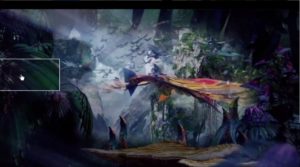The GPAC Licensing members have been long time supporters of accessibility initiatives.

Magnifier effect while playing a video.
GPAC is an open-source project and as such, our aim is to make services and products accessible for the wider community. Our user base includes dozens of thousands of people. This means that both our communication and our software integrate feedback from all our users.
We also work on multimedia technology. An aspect of this technology is to improve the interaction between users and technology. In GPAC, multimedia includes text, interactions and scripting to extend and personalize the experience around content. These technologies include a separation between the media and the way it is presented. We also give value to interactive system with technology similar to HTML5 such as MPEG-BIFS and SVG in which multimedia is not limited to audio and video.
It is important to note that we don’t only implement technology, we help build it. It means that we go to standardization meetings and conferences to listen or speak about what we think is important. GPAC is a respected name at MPEG, W3C and in the industry when it comes to multiplexing and transport specifications. Therefore complying with standards is in our DNA.

Frame-accurate picture-in-picture allows sign language delivered separately.
GPAC has also dived early in interactivity (see our implication in MPEG-4 and W3C), OTT video (see our implication in MPEG-DASH), UHD and VR (see our implication in projects such as 4EVER and VideoStitch). The comeback of VR after 15 years of absence is a chance we had to take. Some of our contributors had worked on it, and now that devices made it possible to invent a new way of remote experiences. That’s why we also contribute to MPEG activities in respect to VR.
The GPAC project is not only a fancy project including tools to package, stream and play the latest content back. GPAC is an open platform that is ideal for prototyping and experimentating with new concepts. In 2013 the DASH Industry Forum mandated us to implement the first version of the TTML subtitle format inside the ISOBMFF/MP4 container. In 2014 one of our founding members gave a series of lectures and training around subtitles, including at our long-term partners IRT.
We’ve tried to extend the reach of our collaboration with important partners such as IRT, BBC, EBU, Movie Labs, and others, but we couldn’t find any opportunities on the market to launch a product. It is not acceptable that accessibility is regarded as an after-thought. Accessibility should be considered in the production and distribution process from the start.
In 2016 IRT proposed us to be part of a project that included a set of partners finally able to address the issue of accessibility using VR. We jumped in. We cannot limit the accessibility experience to what it is today: wide characters, strong colors, and a scattered obligation from regulator to content distributor to include captions. There was born Immersive Accessibility [https://www.imacproject.eu/].
ImAc includes valued partners from content production to broadcasters from two existing communities (based in Catalunya and Germany). The project includes companies (Motion Spell, Anglatecnic), associations (RNIB, RBB, CCMA) and academic partners (IRT, i2CAT, UAB, USAL).
The project includes an analysis of the needs of certain populations with regard to the latest VR environments. This means that an ethical comity is part of the project. Then it allows to build better accessibility service tools for subtitles, audio description, and sign language.
In our opinion this is our best chance for us to make a better world.
By Romain Bouqueau




